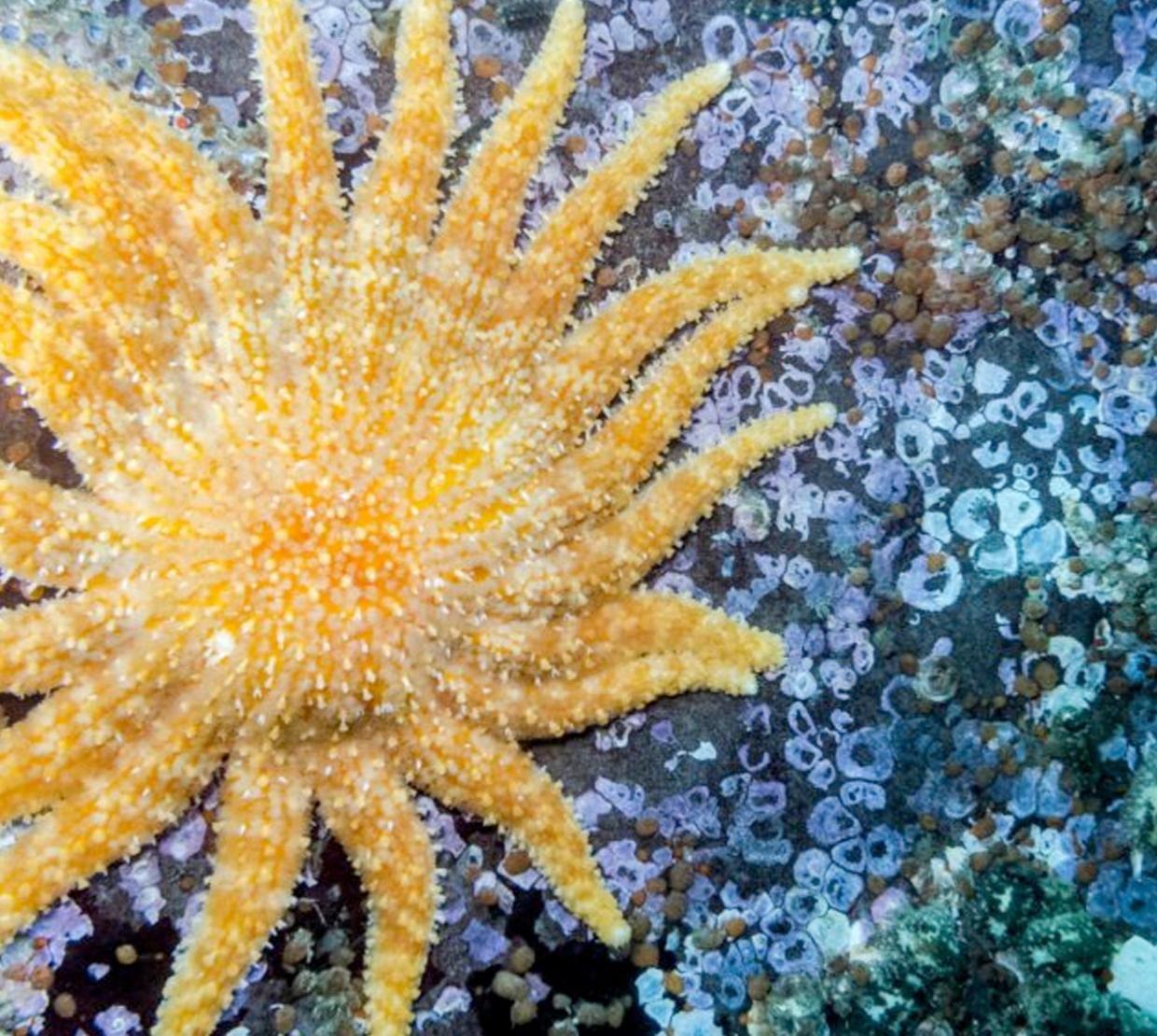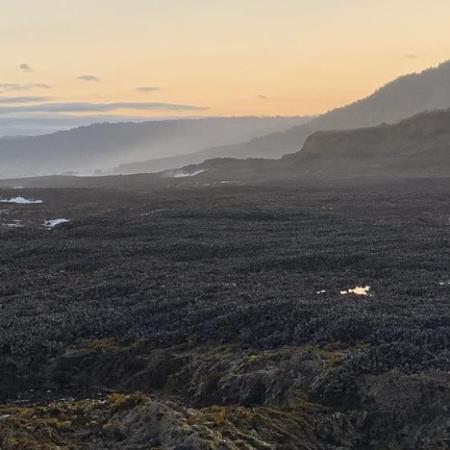A research team including Oregon State University marine ecologist Sarah Gravem has undertaken a study into the feeding habits of sunflower sea stars — a species that was once easily spotted in pacific coastal waters but is now listed as critically endangered following a marine epidemic that began in 2013.
The findings, published this month in the Proceedings of the Royal Society B, indicate that these sea stars play a much more important role in kelp forest health than was previously thought. In fact, the researchers suggest that sunflower sea stars may be key in controlling urchin density and therefore kelp forest growth.
“What we saw suggests a clear link between the crash of sea stars, the explosion in sea urchin populations and the decline in kelp,” said Gravem, a research associate with biology professors Bruce Menge and Jane Lubhcenco. “It also points to sea star recovery as a potential key tool for kelp forest recovery.”
The sunflower sea star is one of the largest in the world, reaching more than 1m in diameter. It is a highly mobile and voracious predator that hunts down a range of invertebrate prey, including bivalves, gastropods, echinoderms, crabs and carrion of any origin. In particular, they readily prey on purple sea urchins (Strongylocentrotus purpuratus), that are important herbivores in several different marine and coastal ecosystems.
The loss of sunflower sea stars in parts of British Columbia and California has been associated with drastic changes in community structure in the forests of bull kelp (Nereocystis luetkeana) in the nearshore waters off these regions. With fewer predators, sea urchin populations exploded and the herbivores began to graze the kelp to the ground.
Researchers have long suspected that the sea star decline upset the balance between predators and herbivores in kelp forest ecosystems, allowing the herbivore populations to go unchecked. The overabundance of urchins was thought to place additional pressure on kelp forests that are already stressed by marine heatwaves. However, prior to the current study, the relationship between sea stars, urchins and kelp had not been quantified.
The researchers emphasize the need for sunflower sea stars in the remaining kelp forests in order to prevent overgrazing by urchins. Since sea star recovery has been negligible since the SSWD event, they also support the reintroduction of sea stars that have been bred in captivity. These individuals may be able to aid in the recovery of kelp forests that have become barrens because they eat the emaciated urchins that reside there.
Researchers from the University of Oregon, the University of Washington, and The Nature Conservancy also participated in this study.
Read the full story here.




